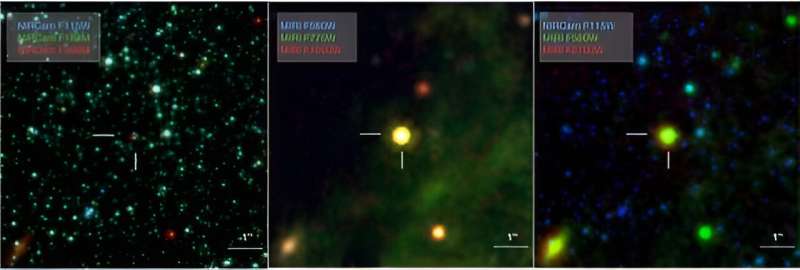Astronomers watched a massive star disappear
- October 4, 2023
- 0
In 2009, a giant star 25 times more massive than the Sun disappeared. OK, it wasn’t that simple. It went through a period of brightness that rose in
In 2009, a giant star 25 times more massive than the Sun disappeared. OK, it wasn’t that simple. It went through a period of brightness that rose in

In 2009, a giant star 25 times more massive than the Sun disappeared. OK, it wasn’t that simple. It went through a period of brightness that rose in brightness to a million suns, as if it were ready to explode into a supernova. But then it disappeared faster than it exploded. When astronomers tried to see the star with the Large Binocular Telescope (LBT), Hubble and the Spitzer Space Telescope, they couldn’t see anything.
The star, known as N6946-BH1, is now thought to be a failed supernova. BH1 gets its name because astronomers believe the star collapsed into a black hole rather than igniting a supernova. But this was a guess. All we know for sure is that it brightened for a while and then became too dim for our telescopes to observe. However, this changed with the James Webb Space Telescope (JWST).
New research published on preprint server arXivAnalyzes data collected by JWST NIRCam and MIRI instruments. It shows a bright source of infrared radiation that resembles the remnants of the dust envelope surrounding the parent star. This would be consistent with material ejected from the star during its rapid flare. Although it seems less likely, there could also be an infrared glow from material falling into the black hole.
Surprisingly, the team found not one but three objects. This reduces the likelihood of a failed supernova model. Previous observations of N6946-BH1 were a mixture of these three sources because the resolution was not high enough to distinguish them. So a more likely model is that the brightness in 2009 was caused by a merger of stars. What appeared to be a bright, massive star was a star system that glowed as two stars merged and then disappeared.

Although the data supports a merger model, it cannot rule out a failed supernova model. This complicates our understanding of supernovae and stellar-mass black holes. We know from black hole mergers observed by LIGO and other gravitational wave observatories that stellar-mass black holes exist and are relatively common.
For this reason, some massive stars turn into black holes. However, it is still unclear whether these will be the first supernovae. An ordinary supernova might have enough residual mass to become a black hole, but it is difficult to imagine how the most massive stellar black holes could form after a supernova.
Since N6946-BH1 is located in a galaxy 22 million light-years away, it is impressive that JWST can distinguish multiple sources. This also gives astronomers hope that similar stars may eventually be observed. With more data, we will be able to distinguish between stellar mergers and true failed supernovae, which will help us understand the final stages of stars as they progress towards stellar-mass black holes.
Source: Port Altele
As an experienced journalist and author, Mary has been reporting on the latest news and trends for over 5 years. With a passion for uncovering the stories behind the headlines, Mary has earned a reputation as a trusted voice in the world of journalism. Her writing style is insightful, engaging and thought-provoking, as she takes a deep dive into the most pressing issues of our time.